What is Dabbing And How Do You Dab?
This isn’t a guide on how to do a no-longer trendy dance move. At High Times, the dab has always been a single serving of concentrated cannabis. The way we dab and the types of dabs we prefer have gradually evolved with the industry. Dabbing is the act of vaporizing concentrates to experience the effects of cannabis more intensely and in less time than with unconcentrated cannabis. To do a dab you’ll need extracts and the necessary equipment to efficiently consume them.
What Is Dabbing?
To understand what the act of dabbing is, you’ll have to understand what a dab is. It’s a slang term for cannabis concentrates. The name comes from the definition of the word dab which means a tiny amount of something. The name stuck because a tiny amount of hash oil is all people needed to feel the potent effects. Concentrated forms of cannabis have existed for a long time. However, the popularity of dabbing wasn’t until the rise of butane hash oil.
Dabbing is simply the act of vaporizing a dab of cannabis concentrate. The necessary tools for dabbing can be intimidating, keeping people from trying it out. Most dabbers today have to carry around a blow torch, nail, carb cap, bong and dab tool to get the most out of their cannabis concentrates.
A bong is referred to as a “dab rig” when you use it solely for consuming dabs. If there’s no shot of you carrying around a blow torch but you want to try dabbing, there are wax pens and devices designed specifically for your needs.
Evolution Of Dabbing
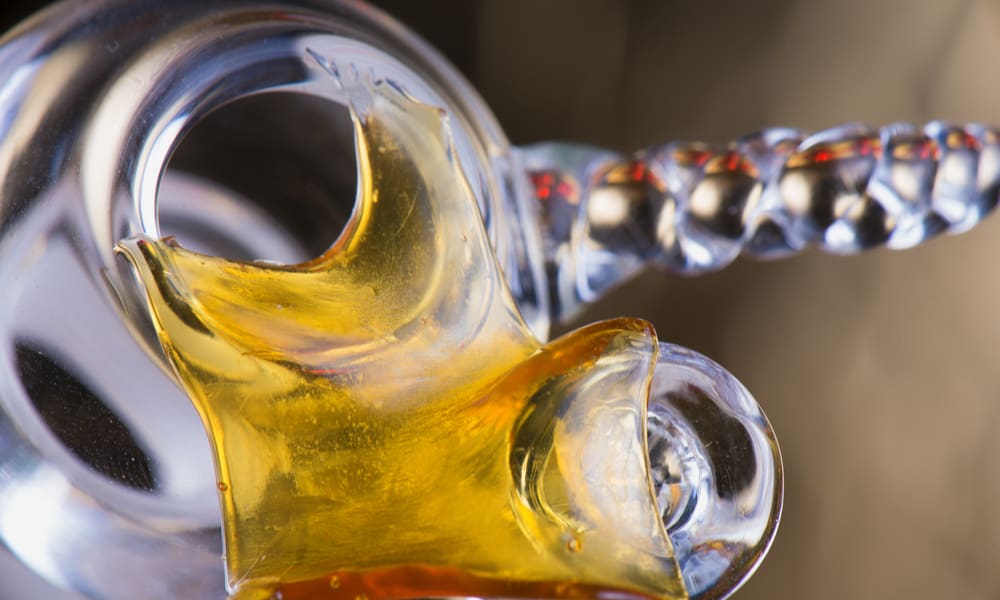
Roxana Gonzalez/Shutterstock
Now that you understand what dabbing is, let’s go over how to do it. There is definitely more than one way to go about it.
Before there were dab rigs, the original way to dab was with a hot knife. The process involved heating a knife until it was red hot. Then a dab was dropped on it while the dabber was hovering above to inhale any vapors that were released.
Skillet
Dabbing eventually evolved to make the process more efficient. The next step in the evolution of dabbing was the swing skillet. OG dab rigs came with extended glass down stems with a flat metal dish at the bottom. Dropping a dab in the hot dish while inhaling ensured all of the vapor went through the tube and into your lungs without any going straight into the air.
Dome & Nail
The next step in the evolution of dabbing made dab rigs less bulky by replacing the swing skillet with a dome and nail. Male joints started to become the standard for all dab rigs because they were designed to fit the nail and dome combination.
To use it, the nail is heated while it’s in the piece and the dome sits aside until you’re done heating. Once it is hot enough, put the dome on and drop your dab on the nail while inhaling. The dome should fill with smoke until there’s nothing left to inhale.
Domeless
The step of adding and removing the dome was removed with the introduction of the domeless nail. Domeless nails have holes in them so the vapor can go straight into your bong without the need for a dome. They didn’t need to be replaced as often as the nails designed for use with domes. There are titanium, quartz and ceramic domeless nails but they’re probably getting dusty on the shelves at smoke shops across the nation because the method evolved even further.
Most modern dabbers have traded in their domeless nails for quartz bangers and lower temperature dabbing.
Different Types Of Dabs
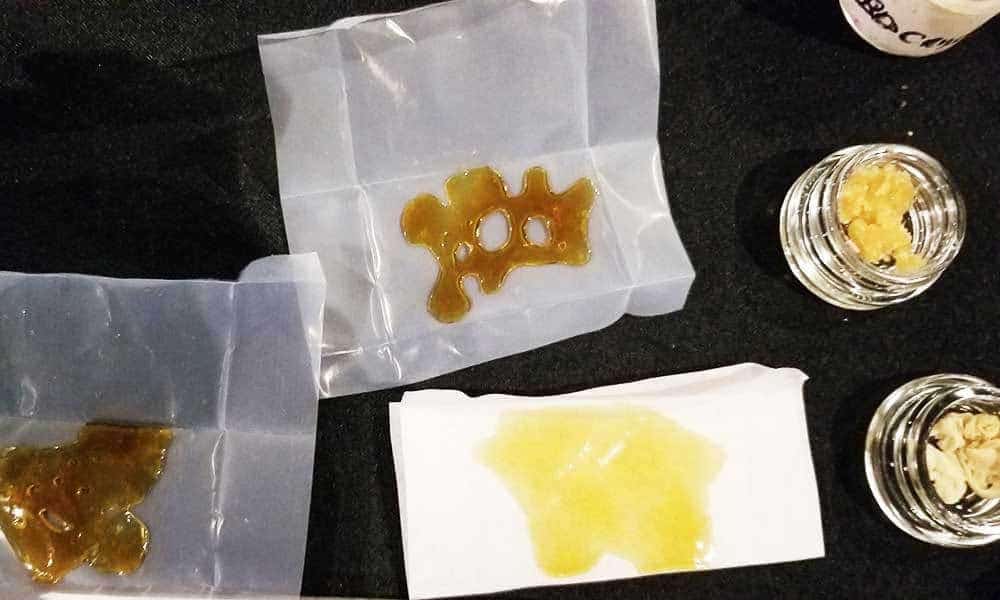
Ab Hanna/ High Times
A dab can take on many different colors and consistencies. It can be dark and stable, transparent and runny or something else. There are terms used to differentiate between different forms of cannabis concentrate. Some of them describe the method used to extract the dab while others refer to the consistency. The type of cannabis used, like trim, nug run or fresh frozen also factor into how the concentrate is labeled.
Butane Hash Oil
The cannabis concentrate market has been hit by several crazes back to back. Dabs really sprang into popularity when butane was discovered to be an effective solvent for extracting cannabis oil.
Butane Hash Oil or BHO started with saps and waxes. Then, for a while, the more stable and glass-like shatter was all that mattered. To this day, the majority of extracts are made with butane because large quantities can be extracted with higher yields than most other methods.
Other hydrocarbons like propane can be used to extract cannabis oils but they haven’t gained as much popularity.
CO2
CO2 oils are made using CO2 as a solvent. They tend to be less viscous than the consistency of BHO. Eventually, CO2 started to be used to make runny distillates with high levels of THC and added terpenes. Now, they’re a popular ingredient in weed cartridges because they can be vaporized without the need for any cutting agents.
Rosin
The rosin technique brought us a wave of non-solvent extracts. They are safer to manufacture than hash oils made with flammable solvents like butane. To make rosin, a hair straightener or heat press is required. Either is used to apply heat and pressure to cannabis until hash oil comes out.
Live rosin is named after both the method used to extract it (rosin) and the type of cannabis used. The word “live” refers to anything that was made with cannabis that was freshly frozen after harvest. The name originates from the smell of concentrates made with freshly frozen material. They tended to smell more like the live plant.
Sauce
One of the latest crazes to sweep the dab community is “sauce.” It gets its name because of the consistency of the extract. Sauce is THCA crystalline or “diamonds,” swimming in liquidy high terpene extracts. This is done by pulling the terpenes during extraction and reintroducing them to the isolated crystalline. There are also extracts with high terpene contents and THCa crystals that never had terpenes removed or introduced.
Rick Simpson Oil
Rick Simpson Oil (RSO) can be dabbed but it will be much harsher tasting than most of the concentrates listed above. Most people prefer to eat or topically apply RSO.
Low-Temperature Dabbing
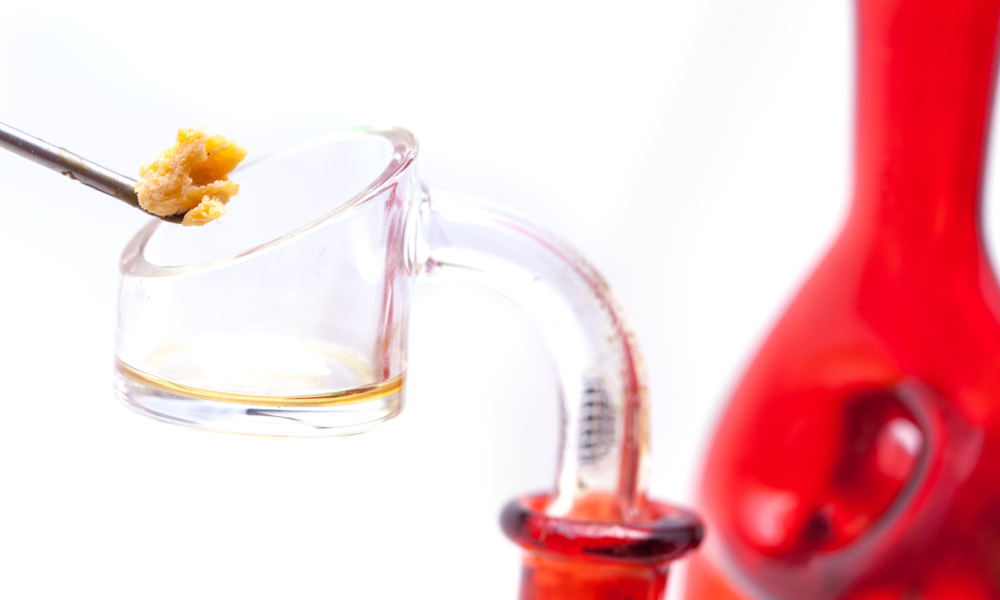
Canna Obscura/Shutterstock
To a novice, low temp dabbing is an overly complicated way of consuming dabs. On the other hand, it is the only way to enjoy quality concentrates to a connoisseur. The way cannabis concentrate connoisseurs dab today is by using lower temperatures. Low-temperature dabs require a carb cap, patience and more time than a high-temp dab. However, the results are more satisfying.
Flavorful terpenes and potent cannabinoids like THC vaporize at relatively low temperatures. As a result, some of those precious components are burned off immediately during a high-temperature dab.
Not to mention, noxious chemicals are released at high temperatures. Hot-temperature dabs are harsher and provide an immediate head rush that some people enjoy. However, the effects associated with cannabis don’t seem to last for as long as they would with an equally-sized low-temperature dab.
Quartz Bangers & Carb Caps
You can low-temperature dab with a ceramic, titanium or quartz nail. However, most contemporary dabbers have made the move to using quartz bangers and carb caps.
The reason low-temperature dabbing is more of a process than with high-temps is the need for a carb cap and timed cooldown. The point of a carb cap is to reduce airflow, lowering the pressure inside the nail and rig, allowing more vaporization to occur at a lower temperature.
Furthermore, the cap acts to reduce the airflow, placing the rig under low pressure. This causes the boiling point of the several components of hash oil to decrease. As a result, you’ll get thicker, better-tasting and longer lasting clouds of smoke.
How To Low-Temperature Dab
To perform a low-temperature dab, the walls of your nail or banger need to be heated for about a minute. Then, you will need to wait for the nail to cool down enough for you do drop a comfortable low-temperature dab.
The cooldown time will vary based on your nail and how you like your dab to be. When the nail has been cooled enough, drop the dab and allow it to melt before adding the carb cap. Once you drop the cap, your nail and rig should quickly fill with thick flavorful smoke. With a directional airflow carb cap, you can spin and spread the oil out for a more even vaporization.
Perfectly timed dabs are flavorful and vaporize to completion leaving little to no puddle behind. If there is a huge puddle you need to wait for less time on the next go. If there is a black stain that can’t be cleaned out with a Q-tip, you went in too hot and need to wait a little longer.
Quartz Inserts

Ab Hanna/ High Times
The latest way to elevate the low-temperature dabbing experience is with the assistance of a quartz insert. We know there are already plenty of tools involved with a low-temperature dab but if you want to make the absolute best of your concentrates, you’ll want a pre-fillable insert.
Heat Up & Cooldown
Usually, a low-temperature dab is performed on a quartz banger that slowly cools. You can use the same method with an insert inside for extended heat retention. Moreover, your quartz banger will be clean even if you fail to Q-tip or permanently stain the quartz from accidental high-temperature dabs.
Insert Drop Technique
The insert drop technique switches things up by providing a way for concentrates to be rapidly heated from a low temperature to a high one.
First, pre-fill the insert with the precise amount of concentrate you want to consume. Next, heat up the walls of your banger or nail as you normally would.
Once you’ve fully heated the nail, wait five to thirty seconds depending on the heat retention of your nail and the size of the dab you loaded. Then, drop the insert while it’s still hot. Out of habit, you might start inhaling once the dab has been dropped. However, you can wait a few seconds to allow the heat to transfer from the banger to the walls of the insert. Once things start to bubble you can begin to enjoy the terpenes and cannabinoids at a temperature range you couldn’t experience with any other method of dabbing.
The first few hits will provide light vapor with flavors more prominent than you’ve ever experienced using any other method. The next few will be straight clouds of smooth-tasting milky vapor. When timed right, there should be little to no puddle left at the end without the need for reheating a stale-tasting puddle.
Dabbing Without A Torch
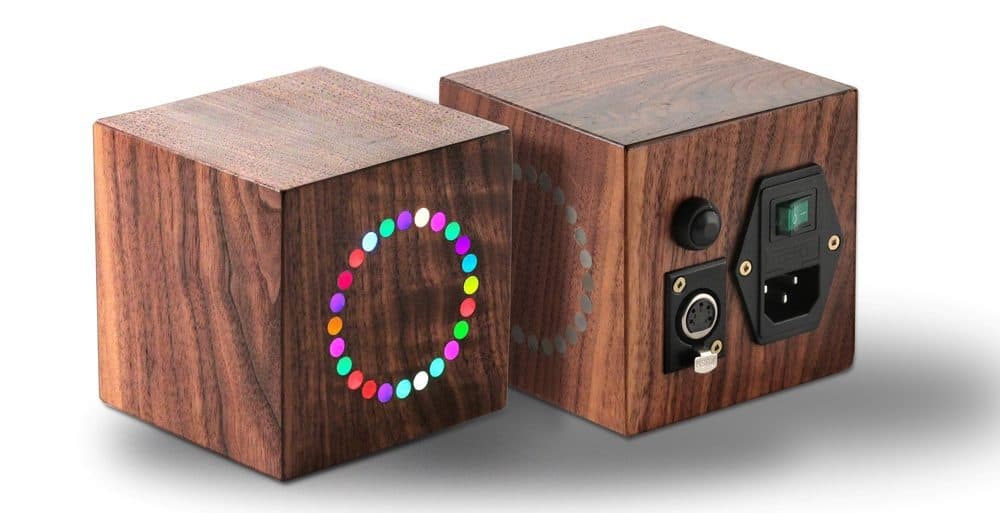
Photo Courtesy of AugustHaus
Maybe you don’t like the idea of carrying a blow torch around but you still like the idea of enjoying the effects and flavors of cannabis without having to inhale burning plant matter. No problem. Dabbing can still be accomplished without the assistance of a torch. However, you’ll have to purchase something to replace it.
E-Nail
If you only plan to use your dabs at home, you can use an E-nail to heat your nail without the assistance of a torch. They plug into the wall and power the heating element with electricity. Most people set it to one temperature and vaporize their dab from start to finish at that temperature.
There are also portable e-nails that don’t require a torch or even a rig to operate. Just hold or press the button to heat the nail or atomizer up. Then, use a tool to drop the dab onto the nail. Finally, cap it off like you would with a normal low-temperature dab.
Portable Vaporizers
You can even ditch the glass and water. Remember, the original way to dab was with hot knives. Nowadays, there are plenty of devices that will heat your concentrates enough to vaporize them without a torch or rig.
In fact, there are several different types of vaporizers designed to handle concentrates. However, unless you splurge for one of the best vape pens, the experience tends to pale in comparison to a torch and dab rig.
Let’s See How Far We’ve Come
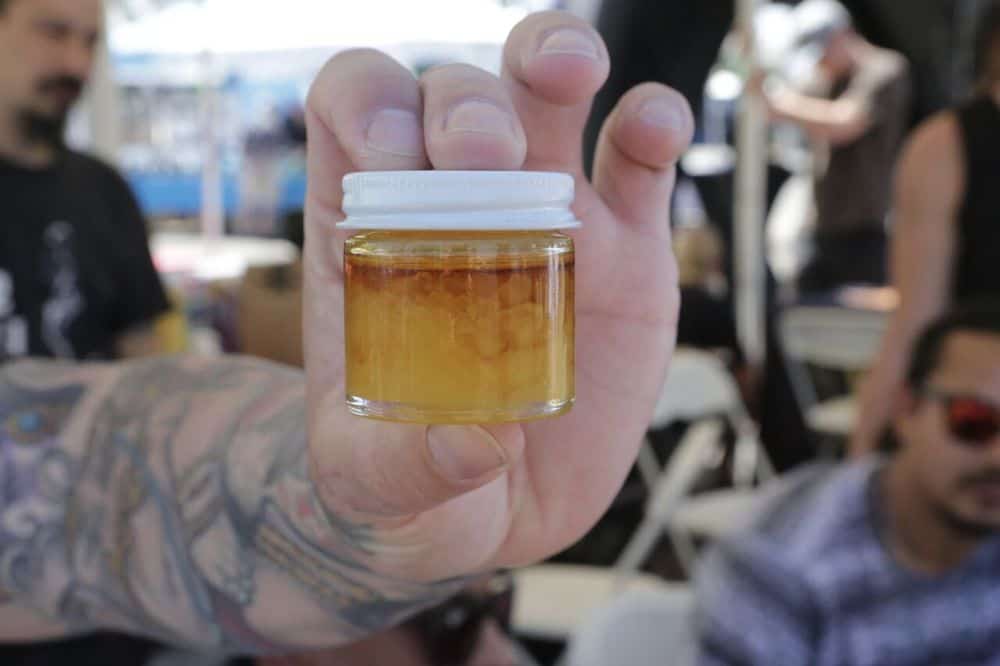
Sean Cooley/High Times
For a long time, most dabs were high THC extracts. However, innovations in extraction are leading to higher concentrations of terpenes and cannabinoids like CBD and Delta 8 THC.
We’ve come a long way from the days of amber-colored sap and hot knives. When it comes to concentrates, the consistency of the product on the top shelves of dispensaries changes every year. Furthermore, the products in the concentrate section of smoke shops continue to adapt as consumers learn more about dabs.
Before we knew much about terpenes most of us didn’t think twice before using concentrates at high temperatures. We didn’t mind getting high off of metal nails or on the metal wire in wax pen atomizers until there were better options to compare them to.
Now, we understand and appreciate terpenes while acknowledging the dangers of high-temperature dabbing. As a result, many new wax pens and nails look and perform differently than they did five years ago. Now pen atomizers are becoming coilless while most nails are made of quartz to enhance flavors.
The post What is Dabbing And How Do You Dab? appeared first on High Times.


